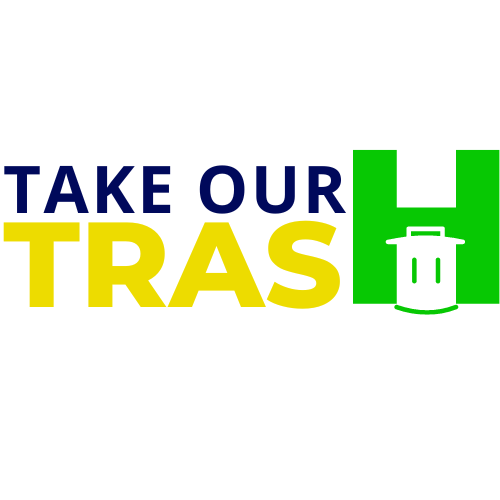Recycling is a crucial part of reducing waste and preserving our planet, but many of us struggle to stay organized when it comes to managing recyclables at home. An efficient recycling station can make the process easier, cleaner, and more effective. In this blog, we’ll explore simple and creative ways to set up a home recycling station that promotes sustainability and helps you keep your space clutter-free.
Why Organizing Your Recycling Station Matters
Having a dedicated and organized recycling station at home can lead to:
- Reduced waste: You’re more likely to recycle if it’s easy and convenient.
- Less clutter: A clean, organized space helps prevent recyclables from piling up and cluttering your home.
- More effective recycling: Properly sorted recyclables can be taken directly to the right facilities, reducing contamination and helping recycling efforts.
-
Sustainability: Organizing your recycling station makes it easier to stay consistent with recycling practices, contributing to a greener planet.
Step-by-Step Guide to Organizing Your Recycling Station
1. Choose the Right Location
The first step in creating an efficient recycling station is choosing the right spot in your home. Consider areas that are:
- Easily accessible: Make sure the station is near areas where you typically generate recyclables, such as the kitchen or garage.
- Away from high-traffic areas: Choose a spot that won’t obstruct daily activities but is still visible enough to encourage use.
-
Near waste disposal bins: Position your recycling station close to trash bins to streamline the disposal process.
2. Invest in Durable Bins or Containers
To create a tidy and effective system, invest in quality bins or containers. Look for bins that:
- Are clearly labeled: Use clear labels to indicate which materials go in each bin (e.g., paper, plastic, glass, cardboard). You can also use color-coded bins for easy identification.
- Are stackable: Stackable bins allow you to save space while keeping materials separate and organized.
- Have lids: Lids help contain odors and prevent items from spilling over or attracting pests.
-
Are durable: Opt for durable materials like heavy-duty plastic, metal, or recyclable containers that can stand up to repeated use.
3. Set Up Categories for Recycling Materials
Sorting your recyclables correctly is key to ensuring everything is processed properly. Depending on your local recycling program, set up separate categories for:
- Paper and cardboard: This includes newspapers, magazines, cereal boxes, and flattened cardboard boxes.
- Plastic: Sort plastics by type, such as PET, HDPE, and so on, or have a general category for common recyclable plastics like bottles and containers.
- Glass: Separate glass bottles and jars, ensuring they’re clean and dry before recycling.
- Metal: Include aluminum cans, tin cans, and steel products.
-
Compostable waste: If you compost, designate a separate bin for food scraps and yard waste.
Having multiple bins for different materials encourages better sorting and reduces contamination in your recycling stream.
4. Use a Bin for Non-Recyclables
Not everything can be recycled, so it’s important to have a designated bin for non-recyclables. Common items that shouldn’t go in the recycling bin include:
- Plastic bags: These can clog sorting machines at recycling facilities.
-
Pizza boxes with grease: These are usually too contaminated to be recycled.
-
Broken glass or mirrors: These are not recyclable and may pose safety hazards.
Make sure your non-recyclable bin is clearly labeled so everyone in the household knows where to place those items.
5. Establish a Routine for Emptying and Cleaning
To keep your recycling station from becoming cluttered, create a routine for emptying bins. Here are some tips:
-
Regularly empty bins: Empty your recycling station regularly to prevent overflow. If your recycling program has a weekly pickup, plan to empty the bins the day before.
-
Clean your bins: Wash your bins periodically to prevent odors and buildup of grime. Use a mild detergent and let them air dry before putting anything back inside.
6. Educate Family Members or Housemates
If you live with others, make sure everyone is on the same page. Create clear guidelines for recycling:
-
Post a list: Display a recycling guide near the station, so everyone knows what can and cannot be recycled.
-
Set up reminders: Encourage family members to rinse out cans and bottles before recycling and to break down cardboard boxes to save space.
7. Incorporate a Recycle Bin for Electronics
E-waste is another category that requires special attention. Instead of throwing electronics in your regular recycling bin, create a designated spot for broken gadgets, batteries, and electronics. Be sure to find local facilities or programs that accept e-waste and dispose of it safely.
Bonus Tip: Make it Fun and Accessible
To encourage everyone in the house to recycle, try to make the process as fun and engaging as possible:
- Add decorative elements: Label your bins with creative signs or stickers.
- Make the station visually appealing: Keep the recycling station organized with neat bins and a clean workspace.
-
Set up challenges: If you have kids or roommates, set recycling goals or challenges to see who can recycle the most or sort the fastest.
Conclusion
Organizing your home recycling station is a simple but impactful way to make recycling easier, more efficient, and more effective. With the right setup, you can reduce waste, keep your home clean, and contribute to a greener planet. Remember, an organized recycling station will save you time, reduce clutter, and encourage everyone in the household to make sustainability a priority.

